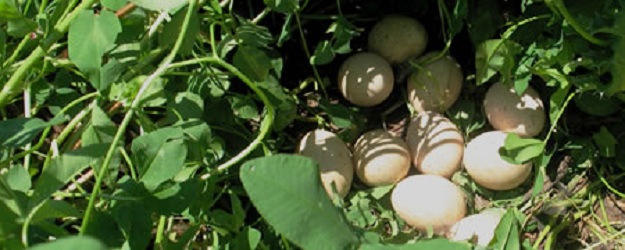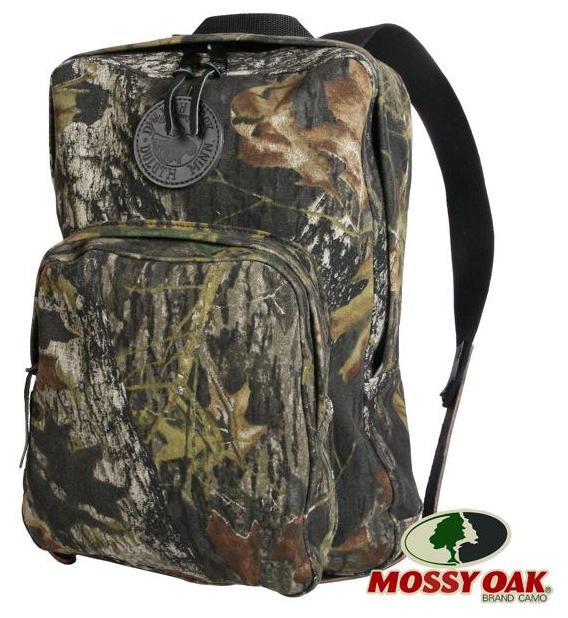
One of our primary responsibilities as a GameKeeper is to be good conservationists and wildlife managers. One of the most satisfying aspects in game management is maintaining a healthy crop of turkeys to hunt every year or bringing back a wild turkey population in an area where they have struggled in the past. A simple mistake we see made every year that can have a negative impact on your turkey numbers is the good old bush hog. After being on your property during the spring, you begin to see a lot of things you would like to mow and keep cut back. Remember that those hens have nests hidden all over the place and many times they are in those grown up areas we are dying to get the tractor into and mow them down. Even routine maintenance on clover fields in the spring leads to a lot of turkey nest being destroyed. If you have chores to do on your property this spring, take the time to walk the areas out thoroughly and scout for any hidden turkey nests.
The picture above is of a nest found in a Clover Plus field at the BioLogic Proving Grounds last spring. We really needed to get in there and spray the field, but we took the time to walk around and look before driving over it with the tractor… and look what we found. Although food plots are usually not the preferred place where a hen will lay her eggs, it is not uncommon for them to use a spring food plot that has some good cover height to it.
Turkey Nest Facts:
Incubation time for the eggs is 28 days
Each nest generally has 8–12 eggs
Only about half of all turkey nests are successfully hatched
More than 70% of poult mortality occurs in the first 14 days after hatching
Mammalian nest predators such as raccoons, skunks, posssums, etc. are responsible for 90% of nest predation
Poults are following the hen within 24 hours of hatching
Protecting Spring Turkey Nests

Duluth Pack premieres Mossy Oak® Camouflage Series
For more than 20 years sportsmen have relied on the Mossy Oak name for high quality camouflage apparel and accessories. Now outdoorsmen can get their favorite Duluth Pack backpacks, canoe packs, gun cases, and hunting accessories in that same high quality camouflage canvas.





























